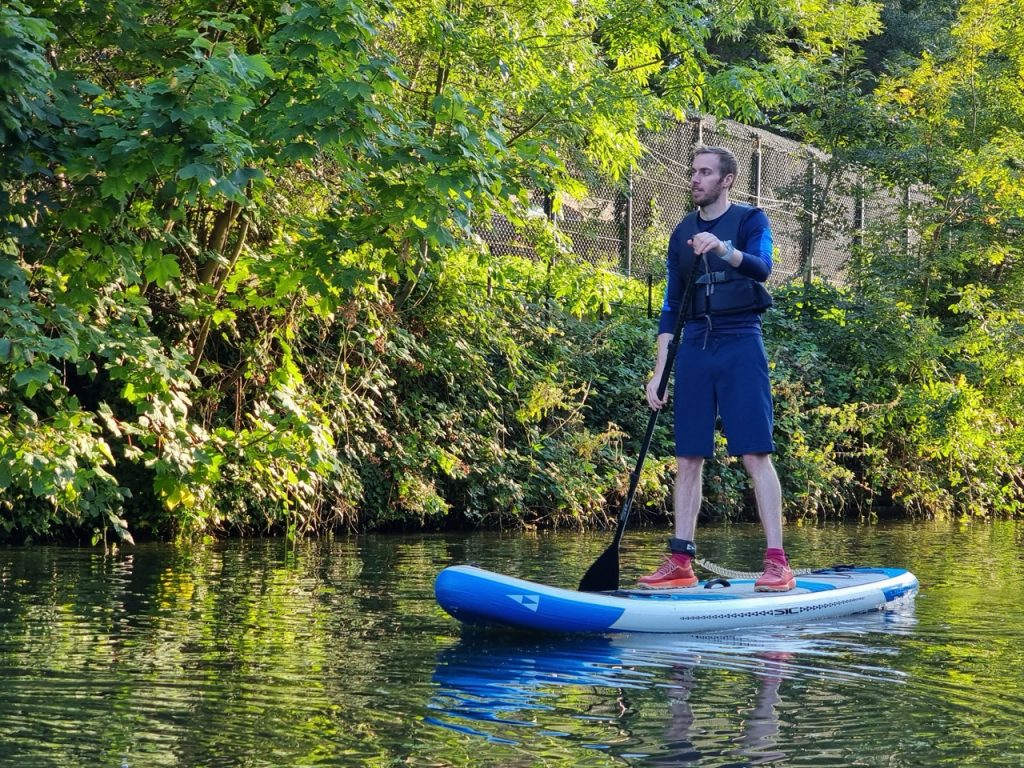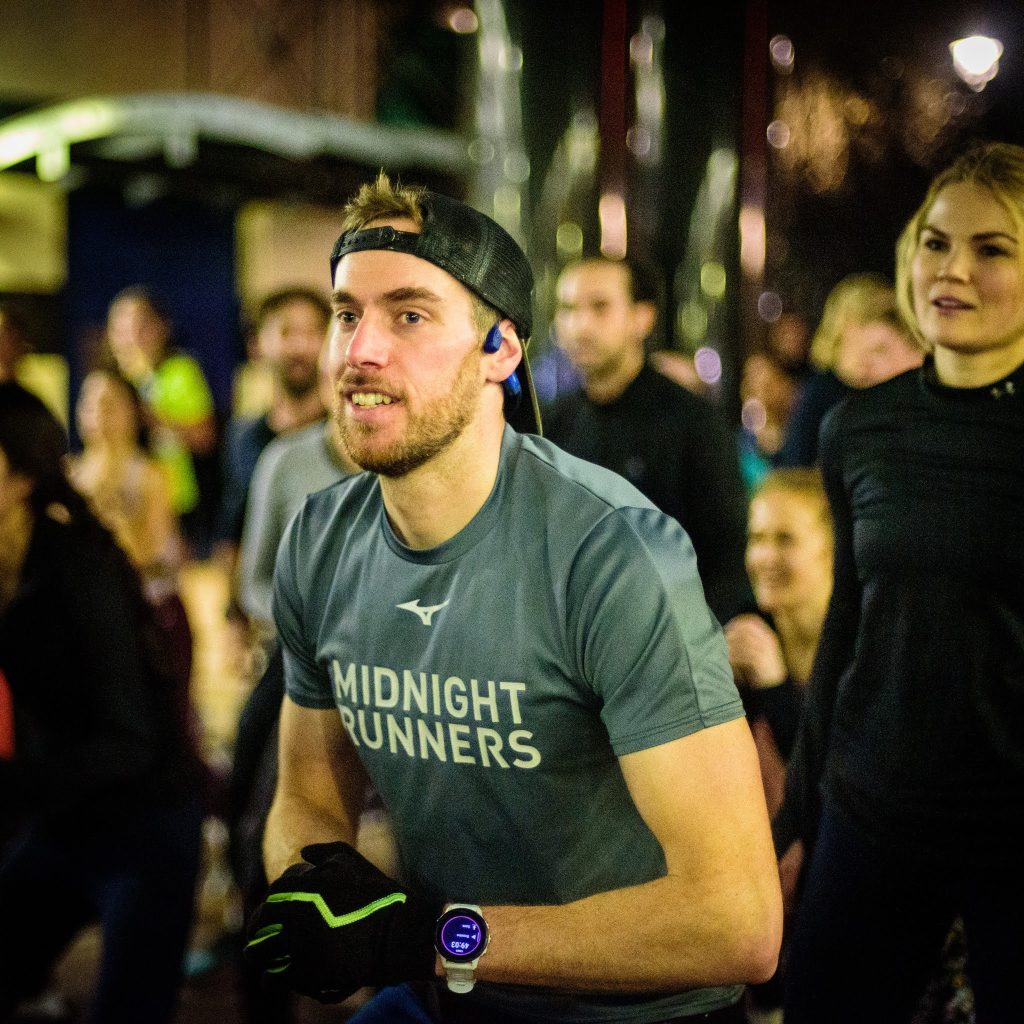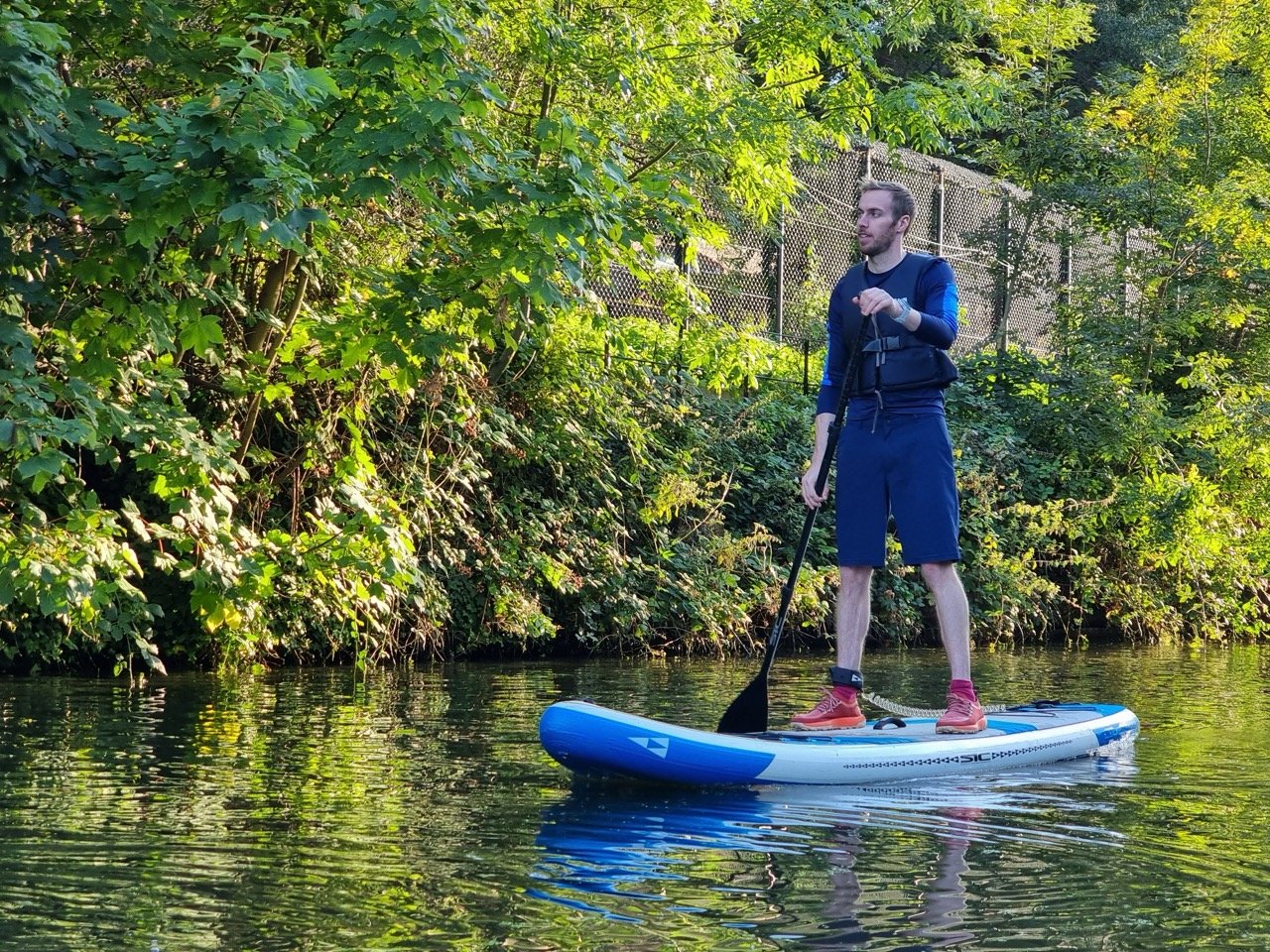by Andrew Murray
As we moved into a new year, on 1 January 2023 I made a Pledge that would define my year ahead: a commitment to go the entire 12 months without purchasing anything new. In a world driven by consumerism, I embarked on a personal challenge aptly named “Nothing New Since ’22”, focusing on sustainable living and reducing my environmental footprint. According to a UK Parliament report, the textile industry – which manufactures a vast amount of running kit – produces 1.2 billion tonnes of CO2 equivalent (Co2e) annually, which is more than the international flights and maritime shipping combined.
Little did I know that this journey would not only reshape my perspective on consumption, but also help continue a personal journey towards a more sustainable and mindful lifestyle.

The Sustainable Start Line
The rules were simple – no new clothes, gadgets, or household items. The only exceptions were consumables, such as food, toiletries and cleaning products. With these exceptions, my mission was clear: avoid anything new while trying to repurpose, repair, borrow, or buy second-hand for an entire year.
Navigating the Challenges
The path to a year without new purchases proved to be more challenging than anticipated. One of the most daunting aspects was finding alternative gifts for family and friends. Birthdays, Christmas, and special occasions posed a unique challenge, my solution was to mostly give the gift of experiences instead. From sports tickets or meal vouchers, to children days out, I discovered that shared memories were more valuable than material possessions; with much less direct impact to manufacture, use and dispose of.
Creative Solutions
To be fair, going into 2023 I was set up well, with some comfort that things like my phone should last the year. My flat was pretty much kitted out and I had plenty of specialist running, cycling and outdoor clothes to keep me active, alongside enough work attire and everyday clothes to see me though most life events for 12 months or more.
Sadly, I did still have to buy a couple new things, a new bike tyre for my bike (principal form of transport on daily basis), a new piece of art (as had strong emotional reasons).
Otherwise to fulfil any on going needs, I had to get creative. Instead of heading to the nearest store for a required item, I borrowed from friends, scoured charity shops, and explored the vast world of online marketplaces. The sense of satisfaction that came with finding a second-hand gem or repurposing an item was immensely rewarding.
Over the year, I clocked up a few “new to me” items including a couple of second-hand pairs of trainers from eBay (in 2023 I ran 1,800 miles last year and mostly in trainers with well over 500 miles in them injury free). I found some great whisky glasses to host a whisky night in a charity shop for a fraction of their new cost. Charity shops also provided several work and casual shirts and even some high end cycling gear (often high quality, barely used, and for 80% original cost).
Repair and Reuse
Another crucial aspect of my sustainable journey was embracing the art of repair. From mending torn clothes to fixing broken appliances, I discovered a sense of accomplishment in giving items a second life. This not only saved money but also reduced my environmental footprint, aligning with the ethos of sustainability.

The Impact
As the months rolled by, I witnessed a tangible shift in my lifestyle and mindset. The appreciation for the items I owned deepened. By actively participating in a circular economy, I felt a sense of responsibility towards the planet, understanding the environmental cost associated with each new purchase. I enjoyed the mystery and suspense of looking in charity shops or online for something and finding a surprising item I’d never have discovered if I went straight to a specific, same-old-shop for the same-old-things.
At times I misplaced key items such as running gloves or forgot cufflinks on a work trip. Rather than rushing to buy a new set, I waited. The result: the gloves turned up a week later, while the shirt was fine with sleeves rolled up. In a world of next day delivery and instant checkout, a little patience and stepping back can be the right choice.
Lessons Learned
Speak to family and friends about gifts, most people already have “too much stuff” so understand and appreciate that despite what Hallmark or Amazon advertise, care isn’t measured in financial value of some item. My family did secret Santa requiring second-hand and spend levels which everyone found less stressful and more entertaining.
Many of us have lost the reward and joy from repairing and caring for things which our pervious generations knew all too well (albeit often for necessity). Equally the search and surprise of finding gems in second-hand stores is great. Both approaches save money and, although may take time, is more rewarding for the journey.
You may worry about additional stress of a similar challenge, but it also reduced stress in other ways. Avoiding commercial emails and high pressure, time limited sales helps to avoid decisions you may regret later. You may also purchase alternative and better choices by taking a slower, considerate approach. Sales like black Friday and store promotions often are not actually a good deal and the pressure sales can lead to buyer’s remorse. Not to mention the stress of missed deliveries or damaged packages – I forgot how annoying shopping in the modern world is.
Another lesson I’ll take on board is to take proper time to review and really think about what I need; what is the best choice for my needs; look for quality that lasts and is repairable (or covered by long warranties). Although, mostly, I’ll continue to either use what I have or find second hand. As I write this at the end of January 2024, I’ve still not bought anything new, pushing the challenge out to 13 months.
Moving forwards, as part of 24 goals for 2024, my new ambition is to only buy one new thing per month – meaning I can get items I need or want but still be considerate and aware of my choices.
Conclusion
As I looked back on a year filled with challenges, triumphs, and a continued connection to the world around me. “Nothing New Since ’22” was more than a resolution; it became a lifestyle that fostered sustainability, creativity, and a deeper appreciation for the things that truly matter. In a world that constantly urges us to buy more, this journey taught me the power of conscious choices and the impact they can have on our lives and the planet we call home. It is possible to be a sustainable runner!
Andrew is a London-based runner, whose passion for the environment and running was honed by a childhood growing up in the shadow of the Cumbrian fells. He spent his education and professional career working in sustainability, which led him to be a co-founder of the Green Runners.


